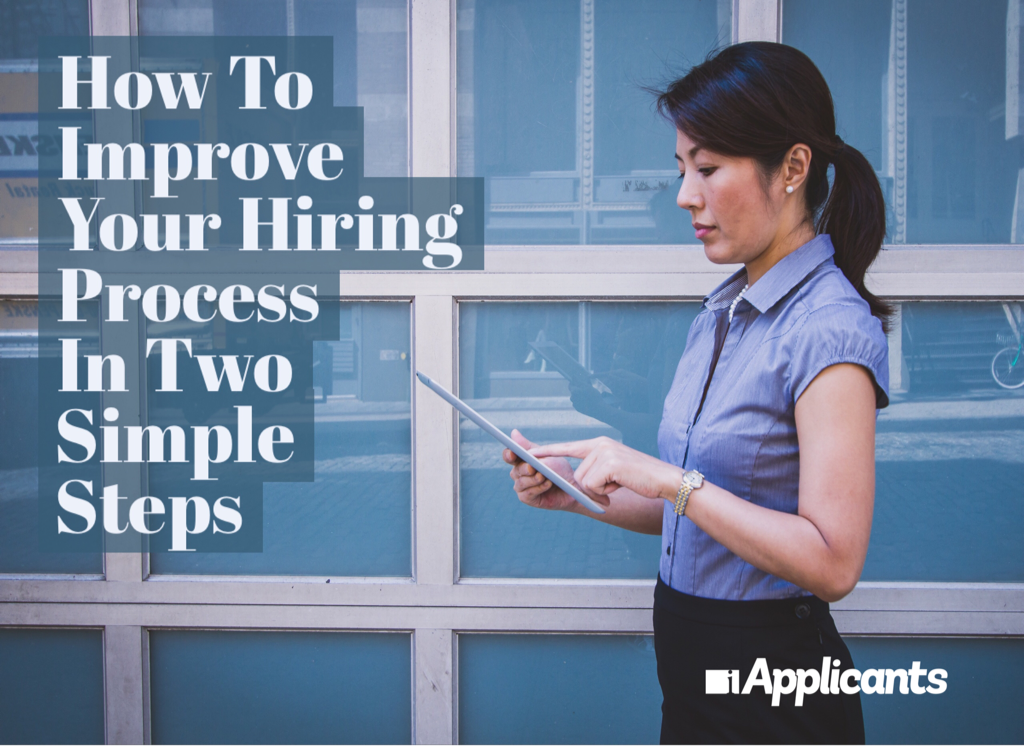Having a well-defined and measurable hiring process is the most beneficial tool you can have in your hiring toolkit. While most HR professionals probably feel as though they have a firm grasp on what it truly means to have a hiring process, I’ve seen a lot of our clients struggle with this idea. Not because they fail to grasp the essentialness of having a hiring process, but rather, they think they have a specific process, when in reality, they simply react to needing to fill an empty seat at the company.
A hiring process should also be specific enough that you could easily compose a step-by-step outline of the entire procedure.
There’s a vast difference between employing a hiring process that is broken down into measurable steps and is consistent from one hire to the next and frantically putting the pieces into motion to recruit and find an individual quickly because a job requisition just showed up in your inbox. A hiring process takes time to develop. It’s something that should have been tested and should be reevaluated and improved upon a couple times a year. A hiring process should also be specific enough that you could easily compose a step-by-step outline of the entire procedure – from pre-hire all the way to onboarding.
Inspired by this Forbes article, I thought that it would be beneficial to detail two simple steps to optimizing your hiring process, especially now that we’ve laid out some useful parameters for what it means to have an actual process in place.
Hiring Process Optimization Step #1 – Clearly Outline Your Job Objectives
The first step in creating a hiring process that will attract the type of employees to you that will build a solid foundation for your business is to clearly define your expectations of what the job entails. There are a number of ways to accomplish this, but you want to create a very explicit outline of what the applicant will be doing in this position. The more descriptive and transparent you are about these responsibilities, the better able a job seeker can judge whether or not he/she is qualified to satisfy the demands of that role. If you compose a job description or job ad that is laced with legal-ease, the applicant won’t be able to judge whether or not applying for the position is worth his/her time. This lends itself to scaring away quality applicants and also increases the chances that someone unqualified for the position will apply.
Clearly define your expectations of what the job entails.
Hiring Process Optimization Step #2 – Test Your Candidates
Your business wouldn’t launch a product without testing it first because skipping this vital step has the potential to cost your company a lot of money unnecessarily. Hiring a candidate without first testing their skills is no different and should be a step in your hiring process. If you’re hiring a PHP programmer, ensure that the individual can build PHP code. If you’re wanting to hire someone to sell a product, take that person out to sell it to gauge how he/she will do.
If you’re wanting to conduct tests as a way to gauge specific behaviors of your applicants, there are loads of reputable (and legal) behavioral assessments on the market. Some of these assessments allow you to create a benchmark based on your top performers that help you distinguish whether or not the individual would do well in your corporate environment. Hiring an individual is a big investment, so protect that investment by performing tests to ensure he/she has what it takes to do well in the position.
Did you know that we have a whole team of hiring process optimization experts? We also offer hiring consultation, so if your hiring process feels like a dead-end, we can help! See a demo to get started, today.


